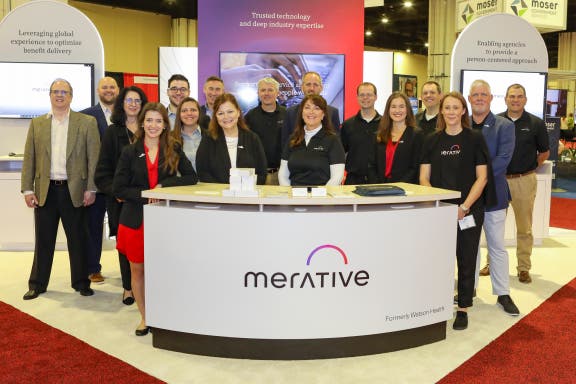How Sonoma County tackles its community health challenges with integrated care

Our Merative social program management team recently attended the Minnesota Government IT Symposium, where we had the opportunity to present alongside our partners at Sonoma County, California, about how Cúram’s integrated care solution can be used in a real-world, holistic way to address and scale to meet the demands of complex growing populations. I presented with Angela Struckmann, Director of the Sonoma County Human Services Department, to detail the steps taken together and the positive results our work has so far yielded for the community.
Merative and Sonoma County: The background
During a 2017 internal evaluation of their service delivery system, Sonoma County identified three main challenge areas:
- Siloed programs. Staff and services weren’t collaborating, resulting in inefficiency, services being duplicated and increased costs.
- Siloed systems. The county’s Human Services department had six or seven separate systems running programs that were not communicating with each other.
- Siloed funding. A lot of County program funding is provided by federal and state teams, meaning it is very regulated and specific. Sonoma had not historically looked at leveraging funding flexibility to share budgets and objectives across departments.
As a first step to addressing these issues, Sonoma County formed the Safety Net Collaborative in 2017. This included health services, human services, the community development commission, justice partners, and child support services, which were all considered “safety net” departments. The Collaborative’s primary task was to address the challenges contributing to poor outcomes in a creative way. To uncover further insights, they partnered with the University of California Berkeley on a research initiative, discovering that 1.3% of the Sonoma County population use $162 million in social services annually. The 1% of highest utilizers accounted for 28% of behavioral health costs, 52% of nights in shelters, 26% of jail time, and $27,000 per person in State and County services annually.
Finding the right solution
The 2017 Tubbs fire that tore through Sonoma County burned down 5,300 homes. The county opened multiple evacuation centers to meet the immediate need, but when the time came to eventually close those shelters, there were still about 150 people left that needed housing. These individuals were a high-need high-utilizer population.
Sonoma County connected with Merative to conduct a quick design thinking workshop to figure out how to serve this high-need, high-utilizer population’s immediate needs. The result of this conversation was the creation of the Interdepartmental Multi-Disciplinary Team (IMDT), consisting of frontline staff working collaboratively to coordinate care and set case plan goals to address the holistic needs of these at-risk individuals. This model minimized existing system silos by allowing county departments and service providers to share client information in real time.
ACCESS Sonoma and the Merative solution
After a first round of successfully transitioning people out of shelters, Sonoma County built a data hub in 2018 that utilizes Cúram’s integrated care solution to consolidate client information from multiple source systems, streamlining access for the IMDT. This solution also helps case workers pull individual client information from the data hub and evaluate it in real time.
The process of bringing these services together into a holistic view of each client was called Accessing Coordinated Care and Empowering Self-Sufficiency Sonoma (ACCESS Sonoma).
ACCESS Sonoma uses a four-pronged approach:
- Interdepartmental Multidisciplinary Team staffed by representatives from all the Safety Net Departments
- Integrating the county’s client data hub with Cúram’s integrated care solution
- System of governance and strategic direction led by the County’s Safety Net Collaborative
- Partnerships with community-based organizations and academic institutions
Cúram’s integrated care solution supports ACCESS Sonoma with a cloud-based, open API approach, pulling data from the master client index and collaborating with other cloud solutions to further empower case workers. This approach includes not just the core caseworker application, but also reporting and dashboard capabilities, and options for a provider portal and a client portal, the latter of which we are looking to implement in Sonoma County in the future.
How Sonoma County has progressed with Merative
Since starting our partnership together more than five years ago, we’ve continued to work closely with Sonoma County, helping them make new progress on a number of health initiatives:
- Quickly delivering necessary services to communities impacted by the 2019 Kincaid fire
- Providing services to 250 homeless individuals encamped on the Joe Rodota Trail
- Assisting vulnerable individuals affected by COVID-19
- Creating a mental health division cohort, diverting people with mental health issues who have been arrested out of the justice system and given more targeted social services
- Adding a jail and emergency department cohort, aimed at reducing recidivism among these groups
- Planning a transitional age youth cohort
Integrating resource data from the 2-1-1 system into the ACCESS Sonoma program. 2-1-1 is a free phone, text, and web resource that connects county residents to health and human resources during an emergency.
How we can work with you
Government health and human services agencies must adapt to the changing needs of those they serve. With more than 30 years of experience delivering trusted social service solutions to government agencies, Cúram streamlines multi-program eligibility, enrollment, and administration. Cúram’s government solutions simplify how at-risk populations connect with integrated care programs, and how agencies administer benefits. Our software solutions accelerate social services delivery with ready-to-use tools, mobile-first design and decades of experience. Nearly 1,000 global government programs use Cúram platforms to streamline caseworker workflows and reduce the burden on development teams – while providing user-centric methods for people to access government benefits.
Related Articles

What we learned: 3 takeaways from APHSA ISM 2022
Our Merative social program management team, including Merative’s integrated care...
By Merative | 4 min. read

Merative names Ashish Sant as General Manager for Merge
Effective today, 12 April 2023, Ashish Sant will lead Merge, Merative’s...
By Merative | 1 min. read

Merative Clinical Development has a new name
General Manager Jennifer Duff describes what the new name means for Merative’s...
By Jennifer Duff | 2 min. read
Ready for a consultation?
Our team is ready to answer your questions. Let's make smarter health ecosystems, together.
